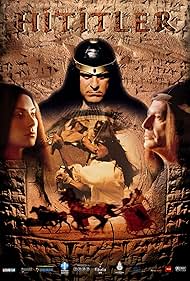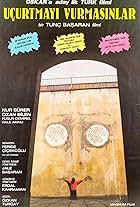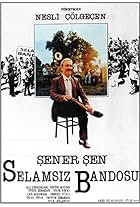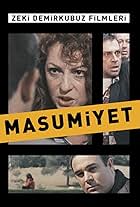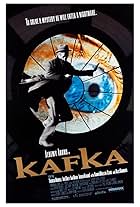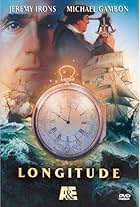Aggiungi una trama nella tua linguaA documentary about the rise and fall of the Hittite empire, which existed about 3500 years ago in what is now central Turkey.A documentary about the rise and fall of the Hittite empire, which existed about 3500 years ago in what is now central Turkey.A documentary about the rise and fall of the Hittite empire, which existed about 3500 years ago in what is now central Turkey.
- Regia
- Sceneggiatura
- Star
- Premi
- 1 candidatura
Foto
Gaballa Ali Gaballa
- Self - Cairo University
- (as G.A. Gaballa)
Trama
Recensione in evidenza
Produced in association with two Hollywood producers, whose credits include RENDEZVOUS WITH DESTINY (2016), JAMES ELLROY'S LA (2011), and OUT OF Egypt (2009), this is a big-budget documentary focusing on the Hittite civilizations with a cast of Turkish stars including Haluk Bilginer, Fikret Kuşkan and Sanem Çelik.
Narrated by Jeremy Irons (in English) and Cüneyt Türel (in Turkish), Tolga Örnek's film traces the growth and development of a people whose empire once covered most of the Middle East. Through a combination of re-enactment, CGI effects, expert testimonies and shots of ancient artifacts, the film tells the story of a series of kings, both weak and strong, who were responsible for the contraction and the expansion of Empire. The best kings were often despotic in attitude, but they knew how to manage an army as well as initiate the best military tactics to ensure victory. They also spent money on fortifying their major cities, notably at Hattuşa in Central Anatolia (the remains of which can still be seen near the village of Boğazköy).
Örnek's film stresses the beneficial aspects of Hittite rule: its emphasis on the rule of law where justice was meted out fairly with the punishment suiting the crime; the emphasis on preserving social harmony through the provision of well-designed cities (even though they were rigidly socially stratified); the importance of religion, especially the worship of several gods who both sanctioned and censured human activity; and the power of myth, which not only held Hittite society together but helped law the foundations for the mythologies of later nations such as the Ancient Greeks and Romans. Hittite cultures were very absorbent; whenever they conquered a nation, they often appropriated its gods rather than trying to impose their religion on others. It was this quality that helped give rise to so many different mythologies once the Hittite race had died out.
HITITLER also emphasizes the race's military and diplomatic abilities. They held on to power for centuries as a result of skillful planning, as well as maintaining a tough regime where soldiers were expected to conform to certain preset masculine ideals. On the other hand the Hittites were also responsible for the first major military treaty, which they signed with the Pharoah Rameses II of Egypt following the Battle of Kadesh. They understood that global peace could be sustained by peaceful as well as aggressive means.
Ideologically speaking, Örnek's film follows his previous documentary on Mount Nemrut (2001) in stressing the uniqueness of Hittite cultures as a forerunner of today's Turkish cultures with strong leaders at the helm of both. On the other hand HITITLER also stresses the importance of Hittite culture as a bridge between East and West, a concept that persists today in Turkish cultures. It is this ability to negotiate between cultures that has helped to sustain peace; if we recognize that ability, then we can follow the Hittites' example and do the same thing in our own times.
To be honest, the documentary does become a little bogged down in historical minutiae, especially in the way it chronicles the reign of one king after another. Perhaps there ought to have been more emphasis on the Hittites' legacy rather than on historical narrative. Nonetheless the film is ravishing to look at with its spectacular battle sequences and use of bright colors and striking imagery to make its points.
Narrated by Jeremy Irons (in English) and Cüneyt Türel (in Turkish), Tolga Örnek's film traces the growth and development of a people whose empire once covered most of the Middle East. Through a combination of re-enactment, CGI effects, expert testimonies and shots of ancient artifacts, the film tells the story of a series of kings, both weak and strong, who were responsible for the contraction and the expansion of Empire. The best kings were often despotic in attitude, but they knew how to manage an army as well as initiate the best military tactics to ensure victory. They also spent money on fortifying their major cities, notably at Hattuşa in Central Anatolia (the remains of which can still be seen near the village of Boğazköy).
Örnek's film stresses the beneficial aspects of Hittite rule: its emphasis on the rule of law where justice was meted out fairly with the punishment suiting the crime; the emphasis on preserving social harmony through the provision of well-designed cities (even though they were rigidly socially stratified); the importance of religion, especially the worship of several gods who both sanctioned and censured human activity; and the power of myth, which not only held Hittite society together but helped law the foundations for the mythologies of later nations such as the Ancient Greeks and Romans. Hittite cultures were very absorbent; whenever they conquered a nation, they often appropriated its gods rather than trying to impose their religion on others. It was this quality that helped give rise to so many different mythologies once the Hittite race had died out.
HITITLER also emphasizes the race's military and diplomatic abilities. They held on to power for centuries as a result of skillful planning, as well as maintaining a tough regime where soldiers were expected to conform to certain preset masculine ideals. On the other hand the Hittites were also responsible for the first major military treaty, which they signed with the Pharoah Rameses II of Egypt following the Battle of Kadesh. They understood that global peace could be sustained by peaceful as well as aggressive means.
Ideologically speaking, Örnek's film follows his previous documentary on Mount Nemrut (2001) in stressing the uniqueness of Hittite cultures as a forerunner of today's Turkish cultures with strong leaders at the helm of both. On the other hand HITITLER also stresses the importance of Hittite culture as a bridge between East and West, a concept that persists today in Turkish cultures. It is this ability to negotiate between cultures that has helped to sustain peace; if we recognize that ability, then we can follow the Hittites' example and do the same thing in our own times.
To be honest, the documentary does become a little bogged down in historical minutiae, especially in the way it chronicles the reign of one king after another. Perhaps there ought to have been more emphasis on the Hittites' legacy rather than on historical narrative. Nonetheless the film is ravishing to look at with its spectacular battle sequences and use of bright colors and striking imagery to make its points.
- l_rawjalaurence
- 28 feb 2016
- Permalink
I più visti
Accedi per valutare e creare un elenco di titoli salvati per ottenere consigli personalizzati
Dettagli
Botteghino
- Lordo in tutto il mondo
- 205.834 USD
- Tempo di esecuzione2 ore
- Colore
- Proporzioni
- 1.85 : 1
Contribuisci a questa pagina
Suggerisci una modifica o aggiungi i contenuti mancanti

